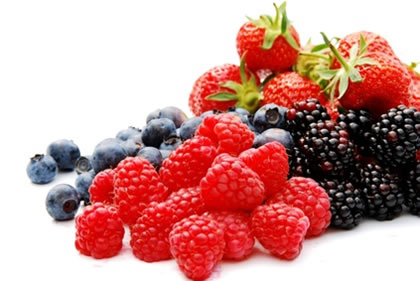Quercetin is a plant based chemical known as a flavanoid. Flavonoids are chemical compounds found in all vascular plant life and in many of the foods most people eat on a daily basis. It is one of the most biologically active bioflavonoids. Quercetin acts as a bioavailability enhancer for many other substances by slowing their metabolic conversion to other substances.
Quercetin Benefits
Quercetin works as an antioxidant by scavenging damaging particles in the body known as free radicals. Test tube studies and animal research additionally suggest that quercetin might have cancer preventive properties. Quercetin acts as antihistamines, which are very useful in reducing allergy symptoms. It also prevents secretion of neutrophil and monocyte lysosomal, which are found in the bloodstream and the beginning phases of inflammation.
Antioxidant
Studies have demonstrated that quercetin prevents the production of free radicals. Antioxidants are chemical substances that donate an electron to the free radical and convert it to a harmless molecule. Quercetin has powerful antioxidant properties and works to protect the body from free radical damage which can damage DNA and cause ageing, heart disease and cancer. Studies suggest that Vitamin C has a synergistic relationship with quercetin.
Allergy
Quercetin has a strong affinity for mast cells and basophils. In test tubes, quercetin prevents immune cells from releasing histamines, chemicals that cause allergic reactions. Quercetin inhibits production of histamine by stabilizing basophils and mast cells. This means that it can be helpful for allergies, asthma, and hay fever.
Energy
 In mice, quercetin has been shown to stimulate the production of mitochondria, which are the energy producing components of muscle cells and other tissue. An independent, randomized, double-blind, placebo-controlled, cross-over study from the University of South Carolina showed that when 12 healthy, active men and women consumed 500 mg of quercetin in an enriched drink mix twice daily for 7 days, they experienced a 13.2 percent increase in ride time to fatigue and a 3.9 percent increase in maximum oxygen consumption.
In mice, quercetin has been shown to stimulate the production of mitochondria, which are the energy producing components of muscle cells and other tissue. An independent, randomized, double-blind, placebo-controlled, cross-over study from the University of South Carolina showed that when 12 healthy, active men and women consumed 500 mg of quercetin in an enriched drink mix twice daily for 7 days, they experienced a 13.2 percent increase in ride time to fatigue and a 3.9 percent increase in maximum oxygen consumption.
Inflammation
Quercetin has demonstrated significant activity in helping with inflammation of direct activity of several initial pathways that can lead to an inflammatory response. Quercetin shows antiinflammatory action by its direct antioxidant action and inhibition of inflammatory mediators and enzymes, such as lipoxygenase. Its anti-inflammatory properties may help reduce the pain of arthritis or other inflammatory conditions. In an animal study published in 2006 in Biological Pharmacology, both oral and intracutaneous dosages of quercetin decreased clinical arthritis symptoms.
Prostate
There is some evidence that quercetin may be useful for the treatment of chronic prostatitis and chronic pelvic pain syndrome. Most studies show that 500 mg of quercetin twice daily can help men relieve the symptoms of prostatitis. A total of 28 men who had chronic nonbacterial prostatitis and chronic pelvic pain syndrome took either 500 mg of quercetin or placebo twice daily for one month. At the end of study, the International Prostate Symptom Score declined from 21.0 to 13.1 in the quercetin group and from 20.2 to 18.8 in the placebo group. A 2001 study by the Mayo Clinic found that use of quercetin may be a new breakthrough in the treatment of prostate disorders. According to Mount Sinai Hospital in Toronto, quercetin is an effective remedy for chronic prostatitis.
Cardiovascular
Quercetin promotes cardiovascular health by protecting lipids from oxidation and supporting the health of capillaries by enhancing their strength and integrity. Quercetin inhibits the proliferation and migration of aortic smooth muscle cells, concomitant with inhibition of mitogen-activated protein kinase phosphorylation. Research results published in Surgery in 2002 showed that the antioxidant activity of quercetin reduces the buildup of a key component of atherosclerosis.
Cancer
Studies done in cell cultures have shown that quercetin has activity against some types of cancer cells. The effects of quercetin on cancer have been tested mainly in cell culture models, where it has been shown to inhibit the development of cancer cells by its anti-mutagenic, antioxidant, and anti-inflammatory activity. Quercetin significantly inhibits the growth of precancerous cells affecting the liver, according to a study reported in 2011 edition of Nutrition and Cancer. Research suggests that quercetin may help to treat or even prevent prostate cancer by blocking male hormones that encourage the growth of prostate cancer cells. A study reported in Molecular and Cellular Biochemistry reported that quercetin was able to decrease the activity of specific enzymes known to be involved in tumor invasion and metastases. Quercetin’s anti-tumor action appears diverse and includes inhibition of inoculated cancer cells, chemical and virally induced cancers leukaemia.
Viral İnfection
Studies indicate that quercetin may improve immune function and inhibit viral replication. Data from cell culture experiments provide strong evidence that quercetin may be effective as an anti-infective agent, reducing the infectivity and replication of a variety of respiratory viruses. Researchers in two separate studies have found that quercetin, may be able to protect against influenza. When quercetin was used with anti-viral drugs then the anti-viral effect was even stronger and the quercetin prevented the development of resistance to the drugs which otherwise occurs. Hepatitis C is a contagious infection that mainly affects the liver. In August 2009 cell study showed that quercetin interfered with the gene signals that enable hepatitis C virus production. The investigators demonstrated that the Quercetin inhibits hepatitis C viral production in tissue culture, at least partially through its inhibition of heat shock protein expression. Treatment with quercetin reduced the infectious particle production to nontoxic concentrations of HCV.
Quercetin Food Sources
Quercetin is found in high amounts in the following foods: apples, onions, red grapes, tea, citrus fruits, and green leafy vegetables.
Quercetin Dosage
Oral dose of 500 mg three times per day clinical practice. Quercetin has been safely used in amounts up to 500 mg twice daily for 12 weeks. If the water-soluble quercetin chalcone is used the dose is 250 mg 3 times daily. Pharmacokinetic data show that quercetin can be detected in plasma within 25-30 minutes after ingesting a 250 or 500 mg chewable preparation, and reaches a peak concentration two to three hours after ingestion. Quercetin absorption is maximized by combining it with bromelain, a pineapple extract proven to enhance digestion of nutrients.
 Various lab experiments have shown that sulforaphane may help protect against prostate, colon, pancreas and other types of cancer. Sulforaphane; provided pronounced protection against oxidation damage to prostate cells according to a study on prostate cancer reported in the 2009 ‘Prostate.’ New researchs indicate that one of the targets of sulforaphane may be microtubules, the dynamic tube-like protein fibers in living cells that are responsible for proper cell division and mitosis. We have discovered that sulforaphane blocks cell cycle progression at mitosis in MCF-7 breast cancer cells in a manner similar to that of more powerful anti-mitotic anticancer drugs, such as taxol and vinblastine. Also, topical application of sulforaphane has been shown in some studies to reduce the incidence of squamous cell carcinomas.
Various lab experiments have shown that sulforaphane may help protect against prostate, colon, pancreas and other types of cancer. Sulforaphane; provided pronounced protection against oxidation damage to prostate cells according to a study on prostate cancer reported in the 2009 ‘Prostate.’ New researchs indicate that one of the targets of sulforaphane may be microtubules, the dynamic tube-like protein fibers in living cells that are responsible for proper cell division and mitosis. We have discovered that sulforaphane blocks cell cycle progression at mitosis in MCF-7 breast cancer cells in a manner similar to that of more powerful anti-mitotic anticancer drugs, such as taxol and vinblastine. Also, topical application of sulforaphane has been shown in some studies to reduce the incidence of squamous cell carcinomas. Damiana has been shown to help boost energy and reduce the effects of exhaustion. Has also been proven that damiana contains properties that can help ease anxiety and depression for it has anti-depressant properties that can greatly help individuals that are depressed and anxious.
Damiana has been shown to help boost energy and reduce the effects of exhaustion. Has also been proven that damiana contains properties that can help ease anxiety and depression for it has anti-depressant properties that can greatly help individuals that are depressed and anxious.  The anti-inflammatory effects of anthocyanins can help lower the risk of degenerative diseases such as Alzheimer’s, atherosclerosis and osteoporosis.
The anti-inflammatory effects of anthocyanins can help lower the risk of degenerative diseases such as Alzheimer’s, atherosclerosis and osteoporosis.